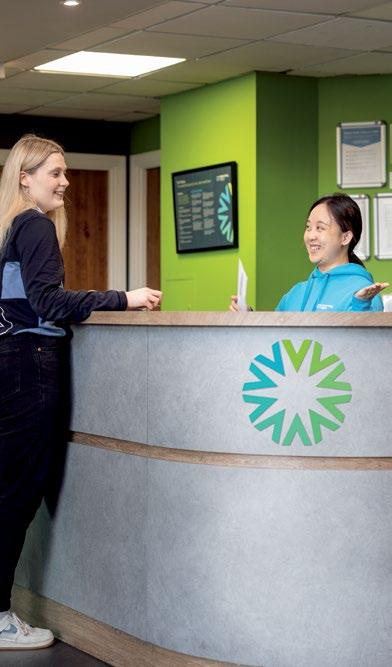About this Report
This report provides information on the overall sustainability and Environment, Social and Governance (ESG) performance of Campus Living Villages (CLV) from 1 January 2022 to 31 December 2022.

The aim of this report is to communicate transparently about material ESG topics and provide insight on the efforts we have taken to manage them over the reporting period.
The framework is based on CLV’s sphere of influence, including the processes and management systems across Australia, the United Kingdom and the United States.
We have considered the Global Reporting Initiative (GRI) Standards and the Task Force
on Climate-related Financial Disclosures (TCFD) recommendations in preparing this report.
Any enquires or feedback about this Sustainability Report should be directed to Louisa Scott, Group ESG Manager.
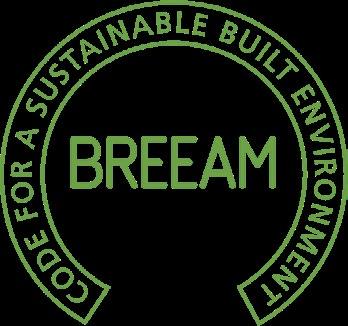
Contact Details
Address Triniti Tower 2, Level 6/39 Delhi Rd, North Ryde, NSW, 2113 Tel (02) 9270 1600
Website campuslivingvillages.com
Message from our Executives
It gives us great pleasure to welcome you to our 2022 Sustainability Report. This report presents an overview of our approach, performance and initiatives across the key ESG matters relevant to our business and our stakeholders.
As our business recovered from the impacts of the COVID-19 pandemic, our university partners, residents and employees resonated with the idea of building back stronger.
Our sustainability framework, operational resilience and workforceagilityhaverevitalised our business for the next phase of growth. In those extraordinary times, we remained strong in our commitment to provide a home for university students that helped them feel safe. Today, we are operating a nearly 100% occupied portfolio, supporting young people who were in school during the COVID-19 lockdowns.
During the year we set a ‘Plan to 2030’ with key goals under each of our sustainability focus areas. This year we are providing our stakeholders with a view of our progress so far, our current focus and our next steps in relation to this plan and our overall sustainability journey. We gathered feedback and insights from our key stakeholders, which has contributed directly into our materiality assessment process.
Our report reflects our continued efforts to evolve our ESG related practices and how we communicate these activities in line with the changing nature of our business.
We acknowledge the challenges that climate change is posing to the world and the potential risks and opportunities arising for CLV. As such, we have set ourselves a phased approach to implementing the recommendations of the Taskforce on Climate-related Financial Disclosures (TCFD) across its pillars of governance, strategy, risk management, metrics and targets. We are pleased to share our TCFD roadmap, detailing our steps to comprehensively respond to the potential impacts of climate change.
As the ‘engine’ behind our sustainability efforts, supporting our teams for success is one of our top business priorities. We recognise that the passion, the expertise and the capability of our people are the key drivers of our sustainability outcomes.
We thank all our stakeholders for their support.
Regards,
JohnC.Schroder Managing Director and CEO
 LouisaScott Group ESG Manager
LouisaScott Group ESG Manager
 DaleClark Vice President of Project Management, Design and Construction
DaleClark Vice President of Project Management, Design and Construction
Sustainability Highlights
Environment
Installed 800kW of solar across the Group
42% of the US portfolio transitioned to Green Power
Set a target to be net zero emissions by 2030
Commenced process to align with the Taskforce on Climate-related Financial Disclosures
Social
Progressed approach to sexual assault and harassment
Finalised CLV Cares mental health and wellbeing framework
84% of residents indicated feeling safe or very safe at their village
Governance
ESG framework finalised
50/50 gender split at the Board
Launched the CLV whistleblower line through Convercent
Strengthened our IT and Privacy practices
Employee engagement scores improved by 17% since 2020.
GRESB performance improved 10 points to 82/100
About Campus Living Villages
Our success stems from having an integrated approach to student accommodation, providing a broad range of services to suit the needs of our partners.
Our flexible, full-service approach allows universities to provide much needed accommodation without being involved in the risk and complexity of managing and developing student accommodation and incurring the associated capital costs.
To help institutions develop the best on-campus living, we offer project management, design, development and management of student accommodation and related amenities, including office space, retail, supermarkets and coffee shops.
We provide unique know-how in unlocking sites as a seamless extension of the university experience and act in partnership with the university, dovetailing our services to their vision.
We deliver outstanding places and lifestyles, backed by genuine care that attracts and retains students and boosts academic performance.
:
Expertise in managing properties to maximise value for our superannuation fund owners
A full suite of management and operational services which can be tailored to a partner's needs
Effective marketing and sales strategies to attract and retain residents
Residential support to ensure a positive and safe community for students
Custom design and construction for a high-quality student experience
Project management to ensure timely and successful project delivery
IT systems to streamline operations and improve efficiency, with a focus on delivering phygital experiences that combine digital capabilities and physical environment in the student space
Long-term operating and management contracts
Acquiring and disposing of assets
Refurbishments and Life-Cycle Cost Planning (LCCP) management
Managing long-term ground lease arrangements
Project management including design, construction, and delivery
Fully integrated, fully serviced
Debt procurement and equity allocation
Weofferarangeofservicesuniquely tailoredtotheneedsofouruniversity partners
Wedeliverarangeofaccommodation solutionsandoperatingmodelsthatcan betailoredtomeettheuniqueneedsof eachpartnerweworkwith:
Our Global Footprint
UnitedStates
Employees: 200
Suppliers: 1,791
Direct emissions: 9,717 tCO2-e
UnitedKingdom
Employees: 291
Suppliers: 695
Direct emissions: 7,043 tCO2-e
Australia
Employees: 238
Suppliers: 793
Direct emissions: 5,587 tCO2-e
The emissions disclosures above (tCO2-e) are based on Scope 1 and 2 emissions.
Our Environment, Social and Governance Framework
We partner with universities to support more residents to graduate and thrive through strong social programs and an affordable and safe place to live.
We strive to continually measure and improve our impact on the environment and communities, so that we can continue to provide positive experiences for our residents.
Our Environmental, Social and Governance (ESG) framework is a integral part of developing and enhancing our student communities.
Health and Wellbeing
A purposeful and equitable value chain
A trusted operator
Maintain or improve resident and employee wellbeing
Modern slavery and human rights
Maintain trust among all partners
Our Material Topics
The following are the material ESG issues, linked to our Sustainability Framework, as identified through our stakeholder engagement and materiality assessment.
Sustainability Pillar
Environment
Sustainability framework areas of focus
Climate Change
Natural Resources
Social Resident Life
Governance
Health and Wellbeing
Supply Chain
A trusted operator
Material topics
Energy
Carbon emissions
Climate risk Sustainable design and development
Waste Water Biodiversity Education
Community Affordability
Safety Accessibility Training and education Wellbeing
Modern slavery Responsible Procurement Social Procurement
Reporting Trust Workforce Partnership
Where we are Headed
Our Durham Mount Oswald project was ranked #1 in the UK 2021 GRESB development sector, and received a BREEAM ‘Excellent’ rating.
2019
GRESB performance improved by 22 points to 82/100 within 3 years
• 100% waste diverted from landfill for UK assets under operational control
• Sustainable employee engagement moved from 74% to 81% over one year
• Implemented a plan to guide CLV’s approach to managing incidents of harassment and assault at villages
• Resident survey shows favourable score of 84% for feelings of safety at their village
2023
• Progress approach to modern slavery and responsible supply chain
• Quantify the success of CLV Cares with feelings of resident wellbeing at 75% or more
2022
Installed over 800kW of solar panels across the Group
Partner to implement leading programs around mental health and wellbeing
• Reduce Scope 1 emissions by 2,500 tCO2-e
• Improve resident literacy around waste and water consumption
Released inaugural Group Modern Slavery Statement
Reduce Scope 3 carbon emissions when creating a new product, through partnerships, pre-fabrications and supply chain
• Operate sustainable buildings that consider people, place, quality and legacy
• Operate a contemporary portfolio in collaboration with long-term university partners
• Be Net-Zero (Scope 1 and 2) carbon emissions in operations
• Improvements in ESG disclosure and assurance, with GRESB score of 82 either maintained or improved
Transition to 100% renewable energy procurement by 2025
Generate 500MWh of solar energy across the Group
2025
Develop a framework to quantify the positive influence of CLV on resident wellbeing and rate of graduation
Our Stakeholders
Team Members
• Employee engagement

• Health and wellbeing
• Training and education
• Safety
Residents
• Accessibility
• Affordability
• Health and wellbeing
• Safety
• Energy efficiency
• Climate risk
The materiality process completed in 2022 included a review of the expectations of our residents, university partners, employees and investors. This process helped us understand which topics we should keep front and centre as part of our sustainability framework.
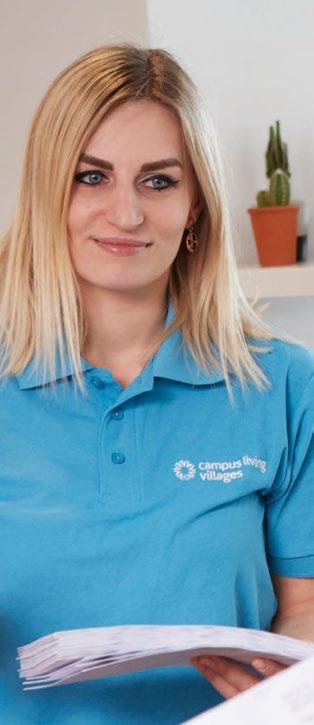
University Partners
• Climate change
• Trust and partnerships
• Responsible procurement
• Health and wellbeing
• Safety
• Social responsibility
JV Partners
• Reporting and transparency
• Responsible procurement Investors
• Climate change
• Responsible procurement
• Transparency
• Value creation
• Affordability
Suppliers
• Responsible procurement
• Supplier diversity
• Modern slavery
Regulators and Industry
• Reporting
• Transparency
It’s important that we understand all the factors impacting our stakeholders across our entire value chain.Stakeholder ESG impacts
The Trends Shaping our Industry
The environment we’re operating in is continuously evolving, with several key trends shaping our world and the cities we operate within.
We’re focused on monitoring these trends and understanding their potential impact to our business, our workforce, our customers, and partners, so that we can both manage the risks and embrace the opportunities they present for our resident customers.
Trend What we have done about it
The increasing incidents of mental health and wellbeing
Launched the CLV Cares framework to support the holistic health of resident customers
Refreshed our approach to managing sexual assault and harassment
Sustainability front and centre
Appointed a Group Manager ESG
Established a Board Committee of Audit, Tax and Sustainability
Formalised an ESG Framework that considers the needs of all of our partners
Proximity Affordability
Technology driving change
Partnering with universities to deliver new and contemporary accommodation that is on-campus and close to services
Continuously improve our service offering and value add for CLV residents
Launched a new website that is now integrated, centralised, secure and linked to our university partners. The website focuses on a positive customer experience
Implemented new security measures to maintain privacy and security, including two-factor authentication and refreshed cyber-security training
Focused on delivering ‘phygital’ initiatives to our villages to enhance the customer experience
Launched the CLV Integrity/Speak Out Helpline
Supply chain
Joined Supply Nation to begin redirecting our procurement spend to Indigenous-owned businesses where possible
Environment
Climate Change
We focus on the risks and opportunities that climate change presents to our business through operations, design and development and aim to manage these risks and track our progress.
This year we set a decarbonisation pathway to achieve Carbon Neutral (Scopes 1 and 2) emissions in our operations by 2030, and Net Zero (Scope 3) by 2050.
We aim to do this through improving efficiency measures, generating energy through solar and procuring renewable energy. Where we design and develop, we’ll do so with sustainability front of mind and will align with frameworks such as BREAAM, LEED and Green Star.
Climate Change Targets How
Net Zero emissions 2030 (Scopes 1 and 2)
Net Zero emissions by 2050 (Scope 3)
InstallingSolar
Renewable energy
Energy efficiency
Climate risk
Sustainable building design and construction
SDG
TransitioningtoGreenPower
800kWofSolarPhotovoltaic(PV)hasbeen installedatvillagesacrosstheUKandAustralia.
IntheUK,approximately600kWhavebeen installedacrossfourassets;Goldsmiths,Durham MtOswald,PrinceConsortVillageandLymeRegis, ChesilandOkefordHouses.
InAustralia200kWofsolarhasbeeninstalled atbothStudentVillageMelbourneandGriffith UniversityVillage,withthreemoresystemsto becommissionedinthenext12months.
Five villages in the US have converted to 100% renewable energy through Gexa Energy, representing 42% of the US portfolio. The Centennial Court, University Forest, University Pines, Village Oaks and Cambridge Oaks villages now use certified Green Power.
Building Climate Resilience
In line with the recommendations set out by the Task Force on Climate-related Financial Disclosures (TCFD), we have started to articulate the ways CLV approaches climate change and its continued threat to our assets, employees and customers.
Governance
Our Board is responsible for setting CLV’s strategic direction in relation to the management of climate related risks and opportunities. The Board bears overall responsibility for the Committee of Audit, Tax and Sustainability, as well as the risk management framework. Key operational, strategic and emerging risks and mitigation strategies, including those related to climate change, are discussed quarterly at this committee.
The Executive Committee plays a crucial role in delivering on the ESG framework, working with the Board to ensure that material sustainability risks are identified and mitigated. The Group Manager of ESG reports into the CEO and MD and updates the Executive Committee fortnightly, discussing environmental, social and governance related risks and opportunities. Where a topic requires more consideration, separate Executive Deep Dives are held to navigate the issue.
ESG is included in the annual KPIs of the Executive Committee, which includes the Group Managing Director and CEO, CFO and all Heads of Department. Inclusion means that ESG is directly linked with the Group Short Term Incentive and the Remuneration of the management team.
Strategy
In 2022 CLV developed its EMP, highlighting the key risks and opportunities present in our operations. With assets in the US, UK and Australia, we operate in places exposed to various climate-related risks. Our village in New Orleans withstood the catastrophic Hurricane Katrina in 2021. Our assets in the UK have navigated the heat waves of 2022 and the east coast of Australia has withstood fire, flood and heat.
The other risks highlighted within our EMP include energy use and associated GHG emissions, waste generation, water consumption, land development and management (including impacts on biodiversity) and environmental compliance and obligations.
Where CLV designs and develops an asset it will do so with future operations at front of mind, which includes the rising costs of living for our resident customers, the heat and rain related risks involved with construction, and the way Water Sensitive Urban Design can create both resilient villages for our residents, but also contribute to the sense of place that biodiversity can bring.
There is an opportunity to partner with suppliers to deliver low-carbon purpose-built student accommodation facilities with built-in energy efficiencies, aligned to frameworks and certifications such as LEED, BREEAM and Green Star. There is also an opportunity to partner with universities and their research departments to include innovative solutions to climate risk
Climate-related risks and opportunities can have various impacts on the organisation. There are business continuity plans at every asset to minimise operational disruption that may occur due to unplanned events.
Understanding our Physical Risks
Physical risks Medium-high risk
Extreme temperatures
More hot days and warm spells are projected across the locations in which CLV operates. This includes an increase in days over 35 degrees Celsius and a longer duration of warm spells, leading to higher operating costs (energy consumption and maintenance costs).
Mitigation strategies include efficiency initiatives that assist in reducing energy consumption, and therefore electricity bills, for residents. High quality and efficient airconditioning units are being installed to help with thermal comfort during the hotter months of the year in Australia. Solar is being installed to offset the rise in energy consumption. Where CLV designs and develops projects, new assets will keep Indoor Environment Quality (IEQ) front of mind, including thermal comfort.
Extreme weather events
Although there may be a decline in rainfall in some areas, the intensity of heavy rainfall is expected to increase.
Where appropriate, our assets include Water-Sensitive Urban Design and stormwater management strategies. Any new developments will be built with flood resilience front of mind.
Extreme wind
Severe windstorms can cause widespread damage to buildings and infrastructure. Windstorms have considerable human and economic impacts and it is expected that the frequency and severity of storms is due to increase over the next 30 years. Increasingly destructive hurricanes will put more US buildings at risk for wind damage.
Bushfires The Australian bushfires over 2019/2020 demonstrated the devastating financial and social impact harsher fire conditions can bring. The key risks are loss of life, loss of ecosystems and biodiversity, loss of animal species and damage to property.
Where CLV develops, it will do so with resilience built into the design of new assets. Climate risk, including hurricanes, is included in the insurance renewal process each year. This helps to reduce recovery costs should we be impacted by a major climate event.
The primary risk bushfires present to our portfolio is the impact of smoke to Indoor Environment Quality and health.
Low risk
Changing sea levels
The projected range of sea-level rise by 2030 is around 0.07 to 0.19 metres above the 1986–2005 level. This could lead to increased costs and delays to construction; flooding and damage to property.
In the planning and design of new developments, we currently consider stormwater as specified by the relevant authorities or experts.
RiskManagement
Climate-related risks are incorporated into the risk management processes at all levels of the business. The group-wide risk management platform Protecht issues questions to facility managers, village managers, legal, ESG and risk employees in all regions.
Our approach to risk management is guided by regulatory standards and CLV’s own Code of Conduct. Our group risk function is responsible for developing and embedding the risk management framework, advising the business on risk management plans, and consolidating risk reporting to senior executives and the Board. Our approach is also informed by Lexus Nexis from a compliance perspective, which is embedded in the business through the Protecht platform. The environment and sustainability are considered key strategic risks and are reported on to the Board quarterly
Understandingouremissions
We’realsocontinuingtoworkonstandardising ourapproachtointegratingclimate-relatedriskinto ourdevelopmentandconstructionprocesses.
Environmentrelatedrisksareincludedineachasset’s capitalexpenditureandstrategicassetplans.Taking anupto50yearlong-termviewenablesmitigation workstobeplannedintothecapitalandoperational cyclesandlimitstheneedforunplannedor unbudgetedworkstobeperformed.Ifgenericrisksare identified,theywillbeconsideredacrosstheportfolio andaddedtoCLV’sMinimumDesignRequirements tofeedbackexperienceintonewdevelopments.We alsorecognisetheremaybeaneedtoadaptour operationalproceduresforunanticipatedclimate changerisks(suchastheheatwaveintheUKin2022 andAustralianbushfiresof2020/21).
In 2022 we set a target to be Net Zero in direct emissions (Scopes 1 and 2) and in all emissions (Scopes 1, 2 and 3) by 2050.
Our plan to be Net Zero in direct emissions involves:
1. Increasing the efficiency of the assets we control
2. Generating renewable energy through solar
3. Procuring renewable energy
4. Partnering with Industry to drive change
5. Designing and developing assets with sustainability front of mind
GreenWall
AlivingGreenWallhasbeen installedatthePrinceConsort VillageinLondon.Livinggreen wallshavevariousbenefitswhen indoors;theyhelptopurifytheair, increasefeelingsofwellbeing, reduceambientnoiseandhelp withambienttemperature.

Thewallisalsostriking,andhelps toactivatethespaceasausable commonarea.
There
is an opportunity to improve water efficiency and waste diverted from landfill
Social
Resident Life
We know that the transition from home and school to university is challenging, and that a major contributor to positive experiences is the opportunity to make meaningful connections.
Our resident life program ‘Live, Learn, Grow’ aims to support residents to do just that; enjoy their time living on campus, learning life skills while studying, making connections and growing into young adults.
We believe that a strong sense of belonging and community can play a major role in reducing the stress often experienced when starting university, and our approach to ‘social’ is underpinned by this.
Targets How SDG
Create a connected community through the resident life program
Live, Learn, Grow Community Affordability Accessibility
Supportingfoodsecurity
We know that it can be hard to eat a balanced diet during exam time, so we try to help by keeping food a feature of the resident life program at breakfast, lunch or dinner. We often include food as a draw card to entice residents to attend village events, but we also keep their food security and diet front of mind. This includes a variety of food, such as hot and cold breakfasts, sausage sizzles and the occasional sweet!
Wellbeing events
We often invite animals to visit and spend time with our residents, and we also host guest wellbeing speakers and events such as yoga classes.
Celebrate
Each year we celebrate diversity and inclusion by marking various cultural events, including Holi, St Patricks Day, Christmas, Hanukkah and the start of Ramadan.
Customer satisfaction scores
87%
Village staff are helpful and approachable
85%
Favourable score for customer service


Affordabilityandaccessibility
Our accommodation includes benefits that make it more affordable than signing a lease off-campus or with various other providers of student accommodation. We know that life can be expensive, confusing and often, dangerous. We have staff on-site 24/7 to help you if you experience a crisis or are locked out of your room. We are predominantly on-campus partnering closely with universities, which reduces the cost of living.
92%
Kept informed about resident life activities
Health,safetyandwellbeing
The health, safety and wellbeing of our residents is front of mind every day. Be it through our on-site staff, safe physical assets or our incident management framework, we try to be a constant support of the holistic wellbeing of our resident customers and employees.
Ourhealthandwellbeingprogram‘CLVCares’isbackedbyresearchandyearsofexperience.It’sintendedto createacultureforresidentsandourteamsthatisunderpinnedbyholistichealthandwellbeing–tokeep themsafe,connected,informedandtoequipthemwiththetoolstheyneedtostaywell.
Wearecontinuouslyrefiningourapproachtosafetysothatallresidentswillfeelcomfortablewhileathome.
Health and wellbeing
Targets How
Maintain or improve resident and employee wellbeing
Sexual assault and harassment mitigation framework
Wellbeing
Awareness Safety
Employees trained on mental health first aid
84% of residents feel safe at our villages
24/7 staff on-site
Digital access cards across all common areas
Incident Management Framework embedded in all parts of the business
We work in partnership with universities to create safe campuses. This includes collaborating with the university police at our villages in the US to support the safety of residents
CLV Cares
There are six pillars that guide our approach to resident wellbeing and safety
Awareness
Raise awareness of available wellbeing services
Access Partner with organisations to support mental health and wellbeing
Wellbeing
Create and manage a culture centred on wellbeing
Belonging
Increase feelings of belonging by creating an engaged community

Communication
Continuous check-ins both online and in-person
Calm places provide spaces that encourage wellbeing
Governance
A Purposeful Value Chain
CLV will not tolerate modern slavery or human rights abuses in its supply chain.
Our value chain is diverse across each region of the UK, US and Australia. As our approach evolves, we have separated our plan into three tiers; eradicating modern slavery, diversifying our procurement spend and purchasing responsibly.
Apurposefulandequitablevaluechain
Targets
Manage the risks of modern slavery and supporting human rights
Our risks
Our supply chain risks are predominantly in the services we procure to operate our assets, as well as the way we employ and manage our workforce. The high-risk services we procure are cleaning, landscaping and where we renovate or develop, in construction.
How SDG
Social procurement
Mitigating modern slavery
Supplier diversity
Our priorities
Joinaninternationalhumanrights framework
Embedresponsibleprocurementinto developmentandconstructionprocesses
Increaseprocurementspendwithforpurpose orsocialbusinesses,suchasFirst Nations ownedbusinesses
PublishournextModernSlaveryStatement
Finaliseourengagementapproachwith high-riskandkeysuppliers
Our Approach
There are three tiers of our approach to modern slavery. They centre on the ways we operate our business; how we spend our money, how we partner to deliver our services, and how we will manage the supply chain when we develop assets.
Managing modern slavery
Understanding our value chain
How and where do we spend our money?
Responsible investment
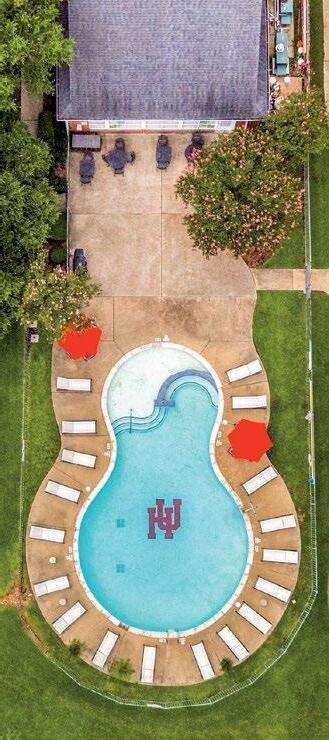
How do we manage our supply chain when we develop assets?
Equitable operations
How do we operate everyday?
SupplyNation
Withinthecalendaryear,CLVbecame membersofSupplyNation,an organisationthatprovidesAustralia’s leadingdatabaseofverifiedIndigenous businesses.Thismembershipwillhelp ustodiversifyoursupplierspend.
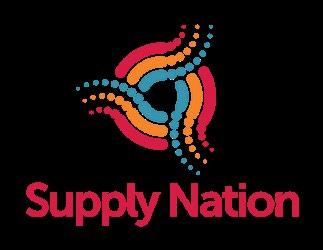
Our Employees
81%
engagement score
85%
Employees feel CLV operates with integrity in its external dealings
78%
Employees feel CLV is doing a good job of integrating sustainable business practices into the services we provide
ThepeoplewhoworkatCLVaretheheartbeatthatkeepour villagesvibrant.Theyareonsiteconstantlystrivingtooperate ourbusinesswithexcellence,fromfacilitymanagement, customerservice,finance,communitymanagementand throughoursupportoffice.Weareproudoftheteamandthe resiliencetheyshowedthroughCOVID-19andimportantly,how theyhavecomethroughtheotherendofit.
Wehaveseencontinuedimprovementinouremployee engagementscoressince2018,achievingasustainable engagementscorein2022of81%,comparedtoa74%baseline.
While our engagement levels remained strong in FY22, our people have been undoubtedly impacted by the pandemic.
We are a long way from fully understanding the short and long-term impacts of the pandemic on our health and wellbeing. With this in mind, our 2023 employee engagement survey will include questions about health and wellbeing so that we can understand this better.
Communication and regular employee engagement surveys have kept staff informed about the operations of the business across each of our regions. We increased the visibility of our leaders and managers and encouraged employee feedback via regular check-ins and pulse surveys.
Duringtheyear,therehavebeenchangestoourorganisational structurewithaGroupExecutiveandVicePresidentofProject Management,DesignandConstructionandGroupDigitaland MarketingExecutivejoiningtheExecutiveTeam.Bothofthese ExecutiveshaveexperiencedeliveringESGandsustainability initiativesinthepropertyindustry.
CLV strives for gender equality, and has reached a 40:40:20 (40% men, 40% women and 20% open) balance across the Group and Board. We have again responded to the Workplace Gender Equality Agency (WGEA).
We are committed to a high standard of ethics and integrity across all the villages and offices in which we operate. In 2022, we launched the CLV Integrity/Speak Out Helpline in partnership with Convercent. This system allows employees and external partners to raise concerns anonymously and confidentially about various issues; from financial and auditing concerns, harassment, theft, substance abuse and unsafe conditions while at work. The system is another milestone in our commitment to upholding our standards and values.
We also complete mandatory gender pay and equal opportunity reports in the UK and US respectively.
At CLV, our people are our most important asset and we believe our culture is an advantage to our service offering.
Our Workforce at a Glance

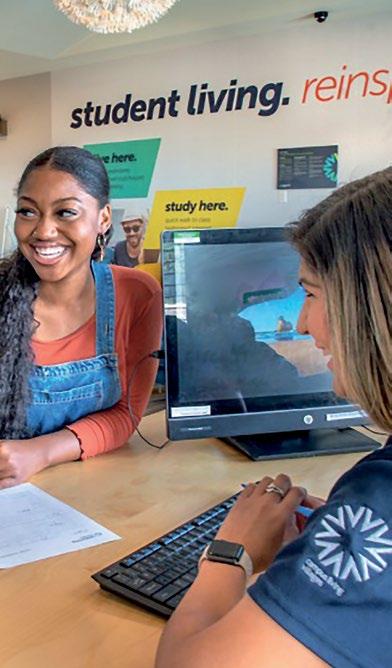
Workforce Summary
GenderSplitbyEmployeeGroup
